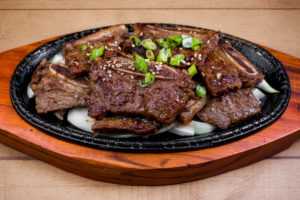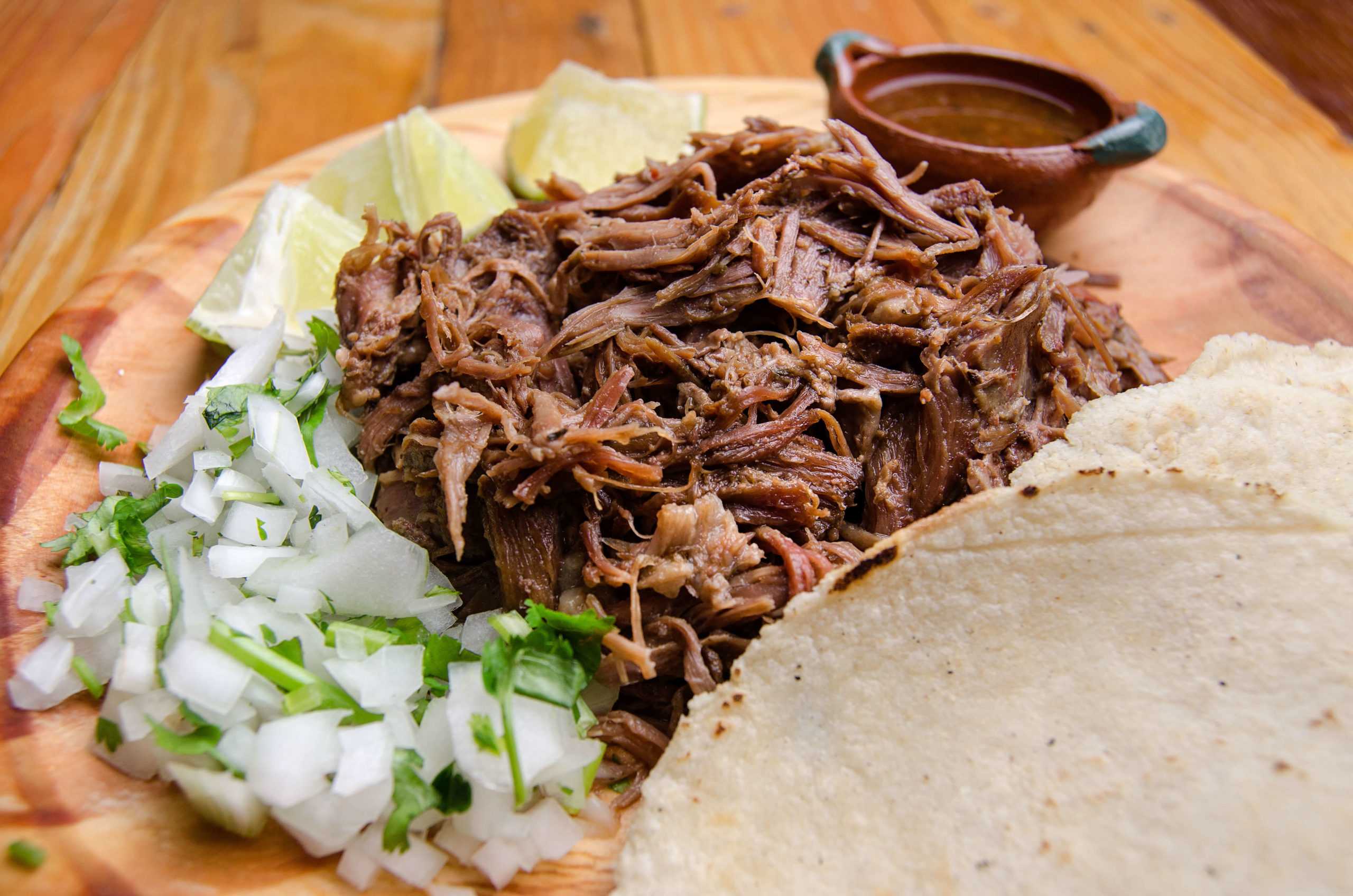What is BBQ like around the world? Chef Howard breaks it down for you here.
Now that we’ve covered regional BBQ, let’s leave the U.S. and head south to South America where we have the Argentinian Asado or barbecue style of cooking. This time-honored and traditional style of cooking involves hanging meat on racks around an open wood-fired pit using heat and smoke to flavor beef, chicken, or Chorizo sausage until crispy on the outside and juicy on the inside. The finished meats are topped with Chimichurri as a sauce or a wet rub to help the flavor.
In Brazil, we have Churrasco which is the word used to describe the unique Brazilian/Portuguese style of cooking over an open flame. The meats are skewered, seasoned, and then cooked on an open flame in front of the heat like a kabob rather than over the heat like a rotisserie. The meats are then carved off the skewers and served with sauces that are often around roasted red peppers, roasted chilies or spicy Piri Piri chili peppers. One of the biggest and best BBQ festivals in the world is a celebration of Churrasco and it’s called Churrascada. Held in Sao Paolo every year this massive one-day event brings in butchers and pitmasters from around the globe to showcase their talent, the style of BBQ they specialize in and the flavors they love to share. The pits that are built for this are otherworldly and worth looking into. It’s a bucket list trip if you are a fan of any kind of Que!!
In Mexico, we have a favorite of mine, which is Barbacoa. Barbacoa traditionally refers to meats cooked in a pit or more directly in a hole dug in the ground. This whole is lined with coals then with banana leaves or soaked burlap and then the meat is wrapped after being seasoned. Once wrapped its covered with either more leaves or more soaked burlap and cooked until tender. Most often large tough cuts of beef and pork like legs, shoulders or roasts are prepared in this manner and paired with sauces that are made with roasted tomatoes and spices and chilis. If you don’t want to dig a big hole in your yard you can produce similar methods using a clay pot, a grill or oven and a much smaller cut of meat.
If we head to Asia, there are two different styles of “barbeque” that I usually think of, Korean and Japanese, let’s start with Korean.
 Gogigui or Korean Barbecue is a way to “grill” meats at your table. The meats are cooked over a charcoal fire and are sometimes marinated with garlic, ginger, sesame and soy sauce. What many consider to be the standard in Korean Que is Bulgogi, a thinly sliced piece of beef sirloin that’s marinated and cooked over the coals and served with rice and some pickled vegetables. At Bulgogi restaurants across the U.S., you can choose from a myriad of different meats and fish that you can cook at the table and mix and match with different dipping sauces and sides.
Gogigui or Korean Barbecue is a way to “grill” meats at your table. The meats are cooked over a charcoal fire and are sometimes marinated with garlic, ginger, sesame and soy sauce. What many consider to be the standard in Korean Que is Bulgogi, a thinly sliced piece of beef sirloin that’s marinated and cooked over the coals and served with rice and some pickled vegetables. At Bulgogi restaurants across the U.S., you can choose from a myriad of different meats and fish that you can cook at the table and mix and match with different dipping sauces and sides.
Japanese BBQ or Yakiniku is the Japanese style of cooking meat over open coals. The meats and/or vegetables are cut into small bite-sized pieces and dipped in a sweet savory soy type sauce or “Tare” both before and after the cook. The coals used are a little different as well, in most parts of the world we use wood-based charcoals or briquettes, in Japan, they are called Binchotan are and made from Japanese Oak. The process to make them is and includes heating the logs to a VERY high temperature then cooling them quickly to form the charcoal. The process results in a natural, slow-burning high temp fuel that imparts flavor while maintaining a clean cook. For Yakitori or chicken BBQ, the meat is sliced, then skewered in an accordion style before being cooked over coals. There is a Yakitori for just about every part on the chicken from thigh, to skin, gizzards and even the small intestines, nothing goes to waste.
In the Southern region of Africa Braai is a social occasion and custom that crosses almost all the South African ethnic backgrounds. Traditionally meats such as chicken, lamb or sausages and shellfish are cooked over a half barrel style cooker or a permanent concrete structure loaded with either hard briquettes for high heat or green hard woods to get a lower heat and more smoke flavor. What makes a Braai different from American barbecue is that the Braai is the go-to social event or Celebration among friends where a barbecue is what you do at home with family. At a Braai, you will see some traditional sides like Pap or porridge along with a tomato and onion sauce or the spicy chakalaka. This is paired with grilled tomato and onion sandwiches served apricot jam for a fresh and sweet contrast.
Let’s finish our journey with Australia and New Zealand where “the Barbi” has been a part of our culture for decades. Now it seems a role reversal has taken form and Texas Style Que has grabbed hold and spread like wildfire. Today not only will you find BBQ restaurants opening up everywhere you will find Texas-style brisket that rivals those made by Pit Masters like Aaron Franklin and the Hutchins family, handmade beef sausages, and all manner proteins cooked low and slow over open pits that transport you to the US. In Australia, BBQ competitions have become weekend gatherings and Meatstock has become an event that draws crowds that rival US BBQ Festivals.
BBQ is as diverse as the regions it is cooked in, whether it’s by country, state or even city every one of them has a way of taking local products and cooking them over an open fire. The fun and fantastic part of cooking over fire is there is no wrong way to do it, at Fuchs we have solutions to help you create your favorite type of Que whether it’s a local style to you or a global flavor profile you are wanting to test. From BBQ and beyond, contact us today to see how Fuchs can help you make something special.


